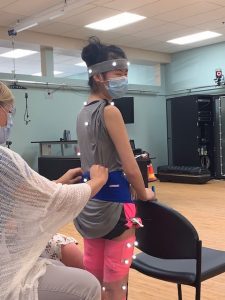I have often said that we would try any treatment if it meant more mobility, strength, and health for our daughter Grace, who is living with Lambert-Eaton myasthenic syndrome (LEMS).
Along with the various medicines and treatments approved by the U.S. Food and Drug Administration, some LEMS patients believe diet changes, vitamin supplements, and holistic health can help alleviate symptoms.
I am all for trying anything that offers hope and the ability to improve life for someone living with LEMS.
Many treatments work differently depending on the patient, but a referral to physical therapy seems to be common among people with LEMS.
When Grace started exhibiting signs of muscle weakness, the first thing the doctor recommended was physical therapy. Of course, without having a diagnosis, the physical therapist was unsure of how to treat her.
Without realizing it, they began Grace on a treatment plan that was contradictory to her illness. They were working her entirely too hard. This led to exhaustion and continued muscle atrophy because they were not working the correct muscles.
Once we had a diagnosis, things changed dramatically.
Our physical therapist was willing to adjust Grace’s program to match her needs. His innovative and proactive approach was key to getting the most out of her physical therapy.
Grace’s physical therapist was very open to my assistance in educating him about LEMS. He was also interested in learning as much as he could on his own.
This teachable spirit and genuine desire to see positive results for Grace led to a wonderful working relationship.
The physical therapist enlisted the help of a motion analysis center to determine exactly where her muscle weakness was originating and to analyze her gait.
The Brooks Motion Analysis Center specializes in clinical and research assessment focused on gait and movement impairments. Its goal is to improve recovery and performance in individuals with neurologic and orthopedic impairments.
Motion analysis quantifies muscle activity, joint motions, and forces during movement.
Grace had this test done to determine a baseline of information. This will help us monitor her progress and provide a guided treatment plan.
At the center, they analyzed everything from strength impairments in Grace’s hips and pelvis to hyperextension in her right knee due to impaired strength and muscular coordination.

The physical therapist was able to use these results to create a treatment plan that targets specific areas of her body.
Grace has continued to go to physical therapy twice a week for well over a year now. She follows the plan advised by the motion analysis center and does her prescribed exercises at home four times a week.
Physical therapy has helped to build muscle mass, strength, balance, and confidence.
I am grateful for a therapist who was willing to learn, listen, and go the extra mile to help Grace get the most out of her physical therapy.
